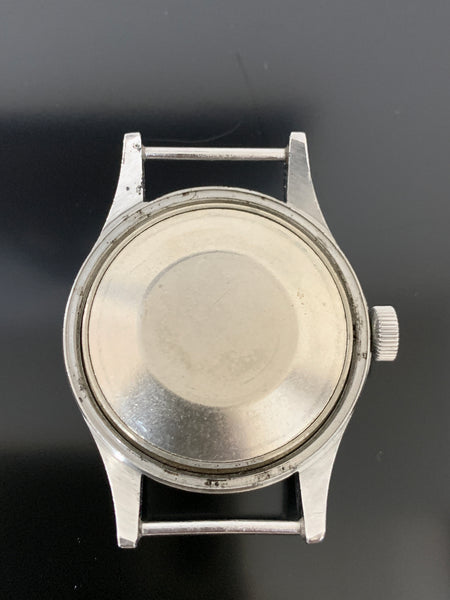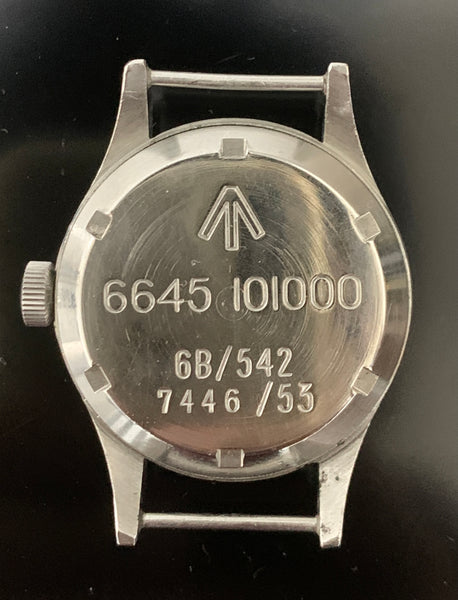Vintage military watch for the Royal Air Force: Omega Fat Arrow
Click here to see the video of Omega's Fat Arrow.
Hello.
This is Seno from Vintage Watch Life.
If you are looking for an Omega military watch, you should definitely know about Omega's Air Force watches, but I don't think many people know the history behind them.
In today's article, I will explain the history and appeal of Omega's Fat Arrow.
The story behind the birth of the Omega Fat Arrow

What you see in the picture is the Fat Arrow model that Omega delivered to the Royal Air Force.
The British Air Ministry placed an order for watches for the Air Force through its long-standing supplier, Goldsmiths & Silversmiths of London.
The Ministry of Aviation then turned to the trusted and established Omega to produce a watch to their exact specifications.
The order was placed with Omega on June 27, 1952, with delivery arranged for May 1953.
These watches were designed and manufactured to a very high standard and were waterproof by default.
The inside of the case has a double layer structure, which makes it anti-magnetic.
This meant that the important requirements for a watch's accuracy, required by the aircraft's instruments during flight, were not affected.
The previous model was originally a Thin Arrow, and when the luminous paint was replaced with tritium, the dial was also replaced.
Now let's look at the relationship between Thin Arrow and Fat Arrow.
What is the difference between Thin Arrow and Fat Arrow?

Please see the photo above.
The left side is the Thin Arrow and the right side is the Fat Arrow.
This watch originally featured a radium dial called the "Thin Arrow."
However, they were recalled after the Department of Defense deemed the radioactive radium dangerous and were replaced with the safer "Fat Arrow" watches with tritium dials.
The difference between this and the Shin Arrow is that a round T logo has been added under the OMEGA logo, and the Broad Arrow mark, which indicates that it is owned by the British military, has a cute feel to it.
The exact number of these watches issued to the Royal Air Force in 1953 is unclear, but it is believed that only a small number were made.
Therefore, this model is now called "Omega 53", indicating that it was made in 1953.
Due to the relatively small production volumes, these Fat Arrows are rare and increasingly hard to find.
By the way, most of them were changed to Fat Arrows, so the number of individuals that survived in Thin Arrow form is overwhelmingly smaller.
What does the real Fat Arrow look like?

Regarding the watch, it may be hard to tell from the photo, but it is quite bulky and heavy.
It's 37mm, so it has quite a presence.
It has the solid feel that is unique to military watches.
Another nice feature is that it comes with a dust cover to improve dust resistance!

The movement is Omega's signature 30mm caliber, Cal. 283, and this shock-resistant movement is finished in rose gold.

The back cover has the Broad Arrow mark from the top.
Below that is 6645 101000
I don't know what this code represents, but I think it's probably a part code used by the Ministry of Defense when requesting parts from the government.
I think 6645 refers to measuring equipment and 101000 refers to waterproofing or something similar.
Below that is stamped 6B/542, which stands for Air Force code.
Below that is 7446/53, which means the serial number for the watch manufactured in 1953 is 7446.

summary
So that's how I explained Fat Arrow today.
simple is best!
There's a saying that goes, "military watches are simple, but they have a deep charm hidden within them."



